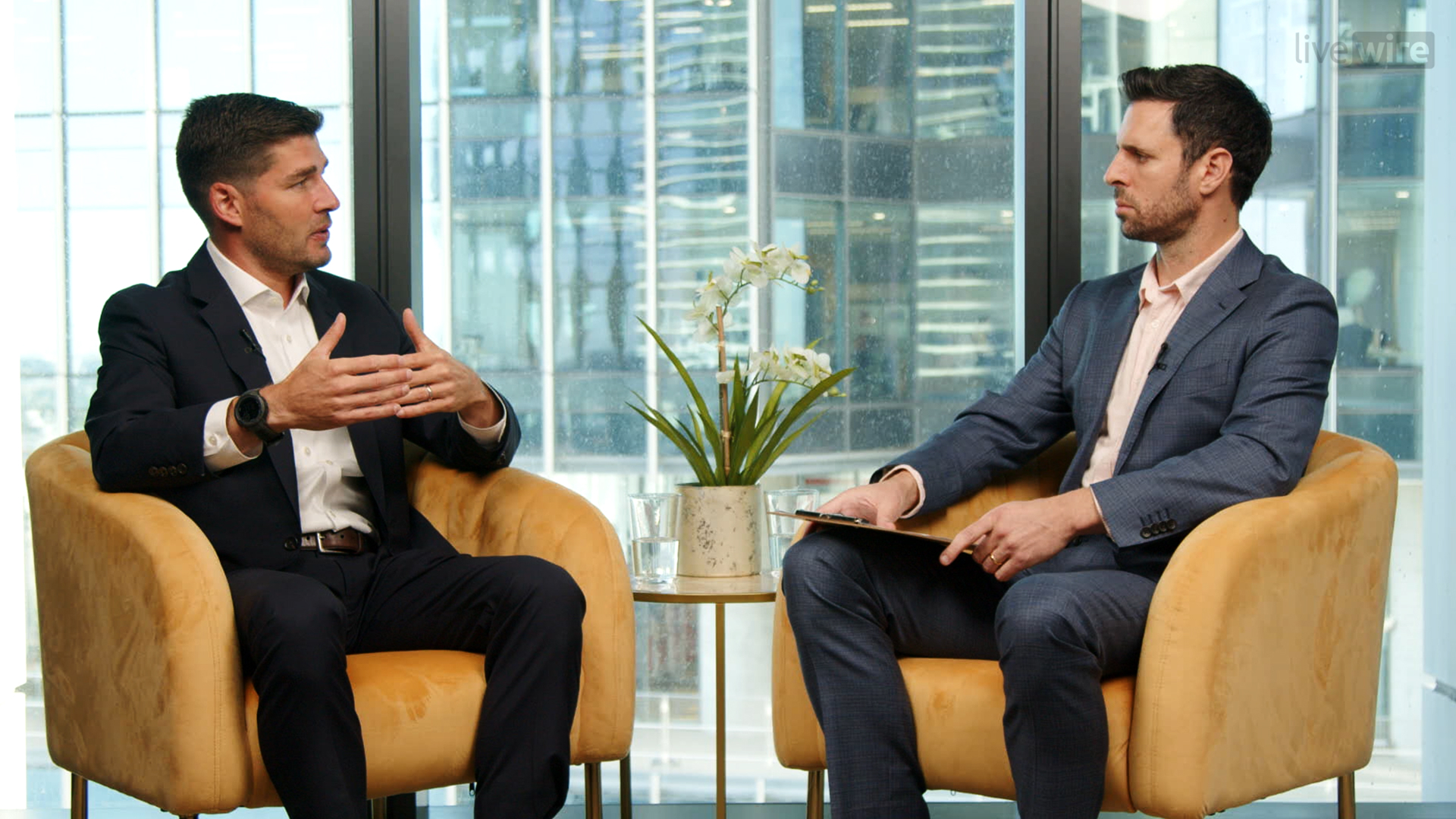$100 trillion plus: the alt investment offering generational growth
The modern portfolio has evolved beyond the traditional 60/40 stocks and bonds mix of the past, says Steven Porto, partner in Ares Infrastructure Opportunities.
"There's a place in every portfolio for publicly listed stocks, bonds and debt or credit products, private equity, maybe some venture and real estate," says Porto.
As investors become more open to alternatives, there's one asset class that may still be flying under the radar of many, despite offering what Ares calls a "generational investment opportunity".
"There's a growing understanding and interest in alternatives generally, and we think infrastructure should be part of that discussion."
The generational opportunity
As our ever-modernising world demands more data, power and manufacturing, the opportunity set for infrastructure is now being measured in the fifteen figure range.
"McKinsey just put out a recent study that between now and 2040, the expected expenditures or investment that are needed in infrastructure on a global basis is over a hundred trillion dollars," said Porto.
"US private infrastructure deal volume seven years ago was around $160 billion, last year it was over $415 billion and it looks like 2025 is going to eclipse that. So we're seeing incredible demand for investment to build out new infrastructure that we need across the globe."

For investors, infrastructure offers a unique mix of growth, yield, downside protection and diversification.
While the returns are attractive, with Ares targeting a net 10% annual yield, it's the diversification and downside protection that are believed to differentiate infrastructure from other asset classes.
It offered a level of protection during and after Covid, and continues to perform independent of other markets.
"Whatever's happening in public markets for example, or investment grade bonds or high yield bonds, that really has zero impact on whether your ownership in that long-term infrastructure asset is going to produce cash flows," says Porto.
It's the non-replicable nature of infrastructure assets that give them stability and resilience.
"We're talking about very large assets. Think of a data centre, a power plant, a midstream natural gas pipeline that transports natural gas from point A to point B, or a large transportation asset."
"They're capex heavy - so hundreds of millions of dollars, if not more, to build. There's high barriers to entry - you can't just go replace them in a six month or one year cycle. They take years to develop and years to construct and they're income producing."
That asset profile is what underpins the specific opportunity on offer to investors right now, says Porto.
"The way we're approaching it and the growth we see is finding unique investment opportunities where we can take our investors' capital to place into them for a very long period of time, and it generates income and yield."
Areas of interest
Through its Core Infrastructure strategy, Ares is looking at the full spectrum of infrastructure in order to find one of the best risk-adjusted returns.
"We're creating diversified exposure to the different sub-sectors of infrastructure," says Porto. "So for us, that means power and electric infrastructure, natural gas infrastructure, digital infrastructure, as well as transportation."
Two of the biggest opportunity sets in infrastructure remain data centres and power, but we believe both require a considered approach right now.
"On data centres and digital, we're being very selective in the long-term equity ownership of those assets," says Porto. "In part because there's a lot of capital chasing and it's very competitive - that has driven yields lower."
It's about finding the right entry point on the assets that are riding the current mega-trend.
"Do you want to be the long-term owner and get the operating long-term cash flows of an asset? Or do you want to be the developer and builder of the asset, get it stabilised and cash flowing (take that higher risk but then sell it down to that lower cost of capital, long-term owner)?"
On digital infrastructure, it's the latter that's more appealing right now.
Natural gas is another area where he's seeing opportunity.
"With political changes in the US and, it seems, more broadly globally, I think natural gas is having a bit of a moment right now, a bit of a resurgence," says Porto.
As the dual pressures of increasing power demand and the necessary rise of renewables, natural gas could be a great transitionary fuel.
"There's an acknowledgement that natural gas can actually be a tool to decarbonisation," says Porto. "If you just took a natural gas plant and a coal plant, the natural gas plant would produce around half of the carbon emissions from a coal plant.
"If we just did that across the world, if we could wave a wand and do that, we would more than beat our emission reduction targets."
Ares' edge
According to Porto, there are three key edges to Ares' approach: scope, focus and tax treatment.
With approximately US$575 billion AUM and thousands of investors around the world, Ares can leverage experience and information on a scale beyond many of its competitors.
And this leads into its second edge: a focused, income-led approach.
"We're just investing in operating cash flow assets," says Porto. "When we make an investment out of our core strategy, it's yielding from day one."
Instead of investing in the development or contraction of infrastructure assets, Ares generally targets those already generating cash.
"When we set up the strategy, we saw such a great opportunity just in owning the assets themselves, which is why we can target what we think is a very attractive net 10% annual yield."
The third advantage is a tax structure that means distributions are classified as return of capital. For non-US investors, this should mean no US tax obligations or withholding tax.
Ultimately it's about capitalising on the growing capital needs that this generational opportunity represents.
"We're really seeing that growth across all the different sub-sectors of infrastructure. And what we're focused on at Ares is finding ways to provide capital to build those assets so that we have long-term contracted cash flows in essential assets that are very hard to replicate."
Investing for Income
Ares core infrastructure strategy invests in essential infrastructure assets with built-in income generation, prioritising regulated and contracted assets seeking to deliver potential diversified returns. For more information, please visit the Ares website.
4 topics

